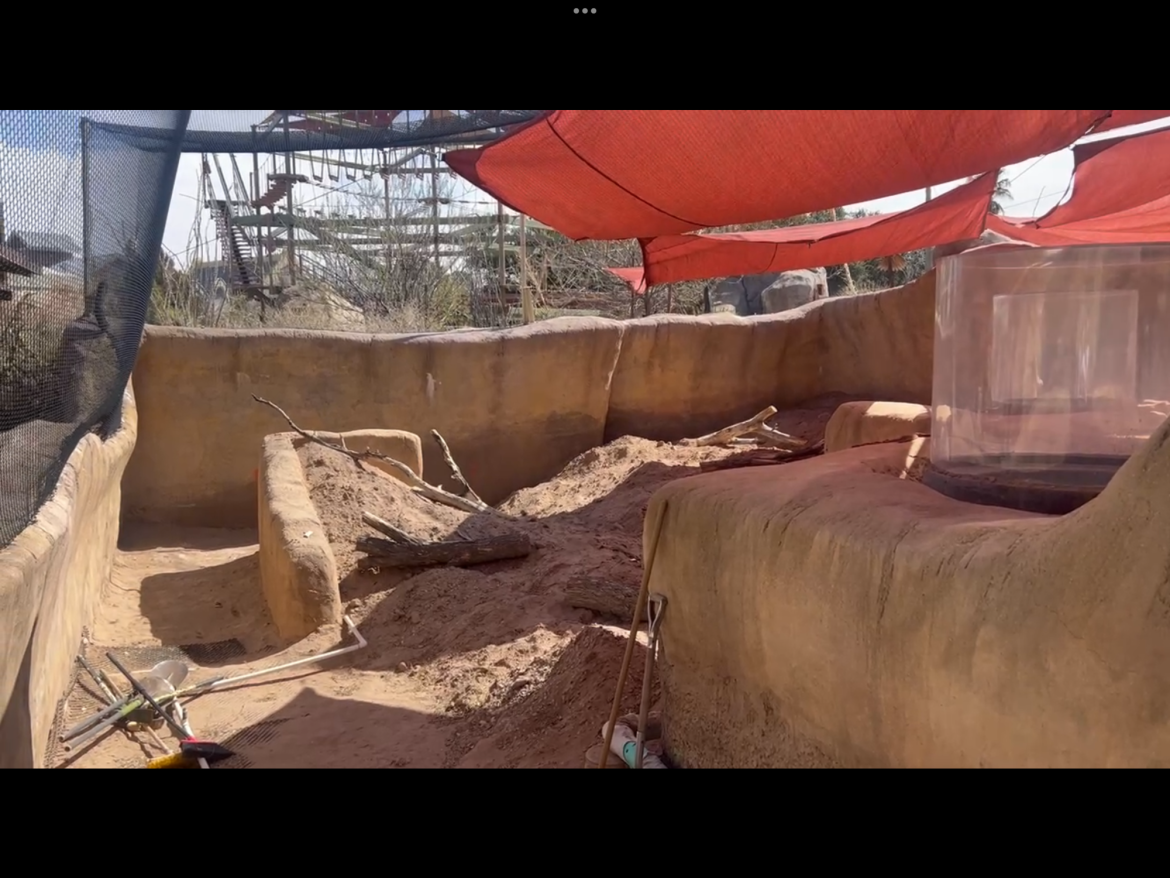The El Paso Zoo is done with prairie dogs.
A colony of 12 black-tailed prairie dogs went missing almost immediately after being introduced to their specially designed El Paso Zoo habitat in August. A previous group of 14 prairie dogs mysteriously disappeared after being introduced in Sept. 2021.
According to a January 2023 USDA inspection report, zookeepers initially believed the first colony simply went underground to establish their habitat for the winter of 2021. They didn’t become concerned until the animals didn’t reappear the following spring. That colony wasn’t reported missing until March 2022..
When zookeepers noticed that the latest colony was gone after one day they set up a motion-activated camera to watch for them.
“They go down, get accustomed dig their burrows, whatever, and then they start popping up for food and liquids and things,” said Joe Montisano, director of the El Paso Zoo. “The guys never came up.”
In September, the zoo tried to see just what was going on underground. A December 2023 USDA report said the zoo “rented a pipe camera to explore the exhibit tunnels, but this could not allow visualization of full tunnel lengths or around corners.”
Finally, the entire exhibit was excavated, section by section, tracking the new group of prairie dogs by their microchips. Nine prairie dogs from the colony of 12 were found dead. On Nov. 27, 2023 three were found alive, but in very poor condition. One died the following day. The USDA declared the cause of its death to be bacterial bronchopneumonia.
The excavation also found the remains of the 14 prairie dogs from the original colony that went missing in 2021.
“They got some kind of a weird disease, rarely happens in this country. It does happen in the wild. They’ve found colonies, completely passed away underground. But it’s pretty rare to have it in captivity,” Montisano said. “But the first batch got it, passed away unfortunately underground. Second batch went in, found them and, unfortunately, caught the same disease. Because nothing made it go away. You know, because we didn’t get a chance to dig it up or anything. So it affected both batches basically.”
After the disappearance of the first colony of prairie dogs was reported in 2022 to the USDA, federal inspectors concluded the animals likely were taken by predators. But El Paso zookeepers didn’t agree that a predator like a hawk could snatch prairie dogs one at a time from the exhibit, Montisano said.
“We never believed it internally because it would have had to been like 12 times repeatedly and they’re fast and they go underground really quick,” he said.
The El Paso Zoo closed the enclosure temporarily to install netting to prevent predator attacks to comply with USDA recommendations.
“So we netted the whole top of the exhibit so nothing could get in. Nothing could get out either, but that wasn’t the problem anyway,” Montisano said.
The USDA report of December 2023 criticized the handling of the prairie dog disappearance. “More animals might have been found alive if the facility did not delay more intensive measures to locate and observe them,” the report stated.
But Montisano said the excavation to look for the animals required a careful, slow process. “We had to dig carefully because we don’t know what’s living or dead down there at that point,” he said.
The two surviving prairie dogs recovered at the El Paso Zoo, but they will not be returned to the habitat. Instead, zookeepers are considering different types of animals that might be added to the enclosure, such as wild turkeys or a mix of species.
“We’re going to renovate the exhibit and put something else in there that goes into the Chihuahuan Desert and kind of move on from prairie dogs,” Montisano said.
Rhino and penguins move into the zoo
Moving on from the prairie dogs, the El Paso Zoo introduced two new exhibits in December 2023. Taj the Rhino now resides in what used to be the enclosure where Savanna the elephant lived for 27 years until her death in January at the age of 71.
Also in December, the zoo welcomed 20 Magellanic penguins into a new, specially designed habitat. The dens inside are refrigerated and an outside play area features a pond where the water temperature is maintained at 55 degrees so they can adjust their body temperature by going in and out.
“When we’re up in the hundreds, they’ll stay in the water pretty much all the time and they’ll get out and they’ll be fine,” he said.
That should help keep them comfortable in the summer desert heat, Montisano said.


